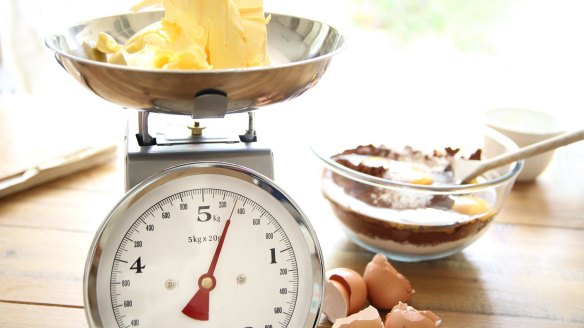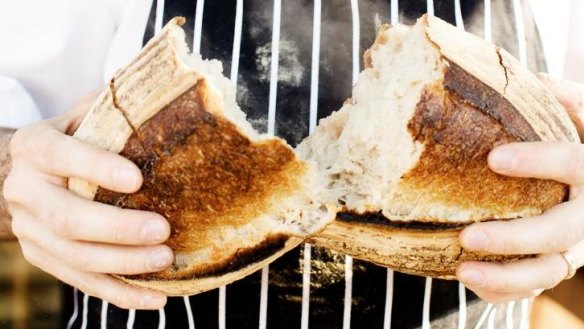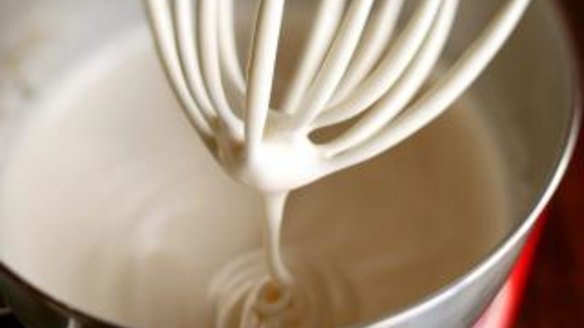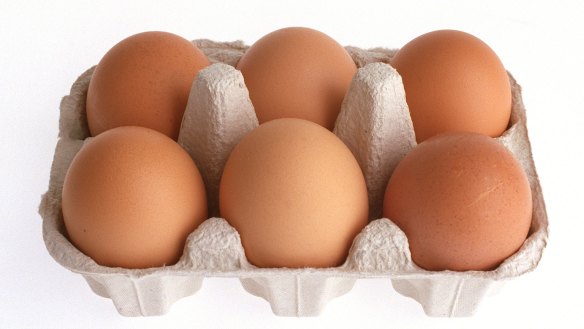Five tips to make you a better baker

More than any other type of cooking, baking dishes out as much heartbreak as joy: Fallen cakes. Soupy pies. Cookies that crumble. If you've been burned by baking - or simply burned your baked goods - you may wonder whether it's just you.
It probably is.

Just joking, of course – but even if you are in fact doing something wrong, that doesn't mean you can't fix it.
And who better to learn from than Rose Levy Beranbaum? She's been writing authoritative, comprehensive baking cookbooks for almost 40 years. Her latest, Rose's Baking Basics, takes special aim at beginning bakers, complete with step-by-step photos, concise and clear directions, and a wealth of "baking pearls" that share tips, hows and whys.
Here is some big-picture advice from Beranbaum to help you become a better, more confident baker:

1. Follow the directions
"If you don't want to follow directions, it's better to make savoury dishes," Beranbaum says. "Baking is best for precise people," or people who give up their idea of how a recipe should be made at least the first time they attempt it. Do you really need to whip those egg whites separately? Does the dough really have to be kneaded that long? The answer is probably yes.
Read the recipe – preferably multiple times – before you start doing anything. Not only do you want to make sure you have all the ingredients you need, you also want to have a good idea of what all the steps are in advance. That way you don't run into any surprises, especially if something is time-sensitive.

2. Be wary of substitutions
I know it sounds like we're being sticklers here, but baking is often so much about chemistry that ingredients aren't necessarily interchangeable. If you are bound and determined to swap things in a recipe, "The first time, make it the way it's written," Beranbaum suggests. "Otherwise you'll never know what you're supposed to be getting."
Flours and sugars are two main baking ingredients that can have a dramatic effect on your results. Changing flours, for example, can alter the structure and density of a baked good. Sugars differ in flavour, texture and how they interact with water, so using the wrong one can also mess up the bake.
When you're contemplating substitutions, Beranbaum says, it helps to at least know the composition of the ingredients, such as the fat and moisture content. So, sour cream and regular full-fat yoghurt? Proceed. Agave instead of honey? Go for it. Raw sugar instead of granulated sugar? Probably fine.
Beranbaum also warns against thinking that fancy, higher-fat butter is always better. The higher fat and lower moisture can cause problems when a recipe hasn't been designed to take advantage of those characteristics.
3. But don't be afraid to make a recipe your own
Have I killed your intrepid spirit yet? I hope not, because there are plenty of ways you can tweak a baking recipe. In fact, Beranbaum's new book is heavily sprinkled with "Make this recipe your own" side bars that provide suggestions on A-OK substitutions. She gets it: "People want to put their own imprint on something, and that's so often why they want to substitute," she says.
Some of the best places to start playing around are add-ins such as chocolate chips, dried fruit and nuts. You can experiment with different extracts and flavoured syrups (even alcohol, where liquor is used for flavour). Spices, within reason, are ripe for personal preference.
One more substantial change that Beranbaum endorses is tin size or shape. Just be sure to think it through. You want to try to keep the volume of the cake tins about the same (fill them with water if you don't know off the top of your head, or consult a chart). But don't go from a shallow pan to a deep pan that's not filled very much, because the batter won't bake right. You can, however, scale a recipe accordingly if you need to make a dramatic change. A recipe designed for a bundt tin will work in a loaf tin when halved, for example.
4. Pay attention to temperature
It's more than just a matter of how comfortable you feel. "Temperature is everything in baking," Beranbaum says. It's important to follow the directions when a recipe calls for ingredients to be at a certain temperature. Often, that means room temperature. Beranbaum says the sweet spot for room-temp butter is 18-24C.
Eggs are another ingredient frequently brought to room temperature (if you forget or are in a rush, you can place the eggs in a bowl of warm water for 5 minutes). Beranbaum: "If the ingredients are off when you're mixing, there's no hope" in, say, a batter. Ingredients at the wrong temperature won't blend together as well, and you might not incorporate the right amount of air for proper lift.
There are plenty of other situations where temperature matters. Unless you're doing a slow rise in the fridge, you need a warmish spot for rising bread dough. The water used in the dough should not be too hot, though; that can kill the yeast. Pie crusts do best with cold butter and a relatively cool environment (chill the counter with a tray full of ice if you have to) to bake up flaky. Chilled dough that's been cut for cookies holds its shape better in the oven. And so on.
5. Measure carefully
Here's another one that goes right along with "follow the directions". Just as recipes can be affected by which ingredient you use, they can be impacted by how much you use. So, yes, as most dedicated bakers will tell you, weight is the most accurate method for measuring (not to mention easier, because everything can be measured into a single bowl where appropriate). There's often a lot of variation when it comes to measuring by volume, thanks to cups of differing sizes.
Flour can be especially problematic, Beranbaum says, because people measure it in different ways, such as spooning it into the measuring cup; scooping and shaking it to settle it; and the method most endorsed by pros if weight isn't an option, the scoop and sweep. (Cook's Illustrated magazine had dozens of people measure a cup of flour by volume and found as much as a 20 per cent difference in how much that "cup" weighed.)
As to why more home cooks – and the recipe developers writing for them – don't rely on weight, Beranbaum suspects it feels too scientific. But as we've established, science and precision are good, even crucial, in baking! So consider investing in a kitchen scale and using weight measures where provided (many baking books will include what the author thinks a cup of flour weighs, because even they can't agree), or at least testing how much a cup of flour you measure weighs so you know whether you're in the ballpark. Whether you go down the rabbit hole of weighing teaspoons and tablespoons is up to you (I don't).
The Washington Post
The best recipes from Australia's leading chefs straight to your inbox.
Sign up- More:
- How to